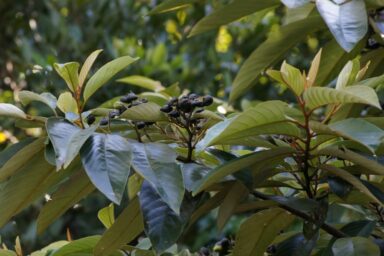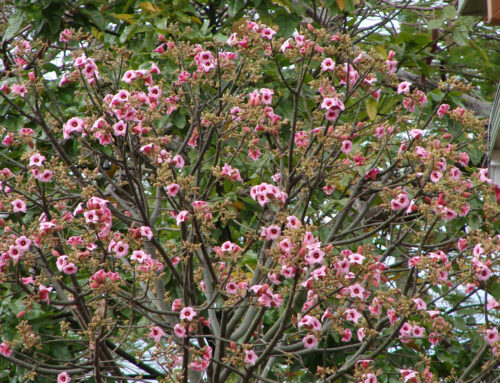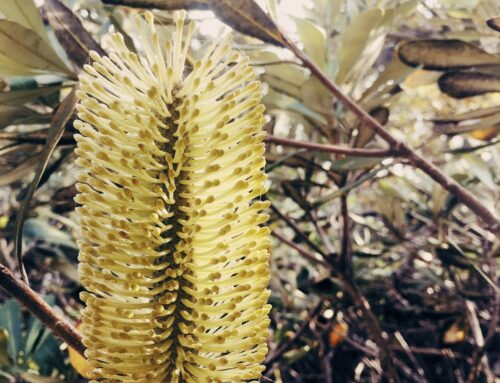Alphitonia petriei, commonly known as the white ash or pink almond, is native to the subtropical rainforests of eastern Australia.
Recognized for its ecological significance and distinctive characteristics.
Taxonomy:
- Family: Rhamnaceae
- Genus: Alphitonia
Description:
- Growth: Can grow up to 30 meters in height, making it a significant component of the forest canopy. The trunk is generally straight with a smooth, grey-brown bark that may have a slightly rough texture in older trees.
- Leaves: Simple, alternate, and elliptical to ovate with a glossy green upper surface and a paler, sometimes hairy underside. The leaves are typically 6-10 cm long.
- Flowers: Small, white to greenish, borne in axillary or terminal clusters (panicles). Each flower has five petals and sepals.
- Seed: Fleshy drupes that are dark blue to black when mature, about 1 cm in diameter. The fruit contains one to two seeds.
Habitat and Distribution:
Alphitonia petriei is primarily found in the subtropical rainforests of New South Wales and Queensland, Australia. Thrives in well-drained soils and can often be seen growing on slopes and in valleys where moisture is adequate. Adapted to a variety of soil types, including volcanic and sedimentary substrates, making it a versatile component of the rainforest ecosystem.
Hosts: (included but not limited to)
- Pied Currawong (Strepera graculina): Feeds on the fruits, in doing so aids in seed dispersal, which is crucial for the tree’s reproduction and distribution.
- Wompoo Fruit Dove (Ptilinopus magnificus): Consumes the fruits and helps in dispersing the seeds over large distances.
- Little Red Flying Fox (Pteropus scapulatus): Consumes the fruits and excrete the seeds in different locations.
Ecology and Uses:
- Habitat: Provides food and habitat for various wildlife, including birds and insects. Its fruits are particularly important for frugivorous birds.
- Timber: The wood is occasionally used in furniture and construction due to its durability.
- Traditional Medicine: Used by Indigenous Australians for treating various ailments, although such uses are less common today.
- Horticulture: Due to its attractive foliage and form, Alphitonia petrei is sometimes used in horticulture and landscaping. Can be planted in parks, gardens, and as a street tree in urban areas.
- Erosion control: The tree’s robust root system helps stabilize soil, reducing erosion on slopes and in valleys. This is particularly important in maintaining the integrity of rainforest terrains.
Links:
Alphitonia petriei : White Ash | Atlas of Living Australia (ala.org.au)
- Tatters, via Flickr






